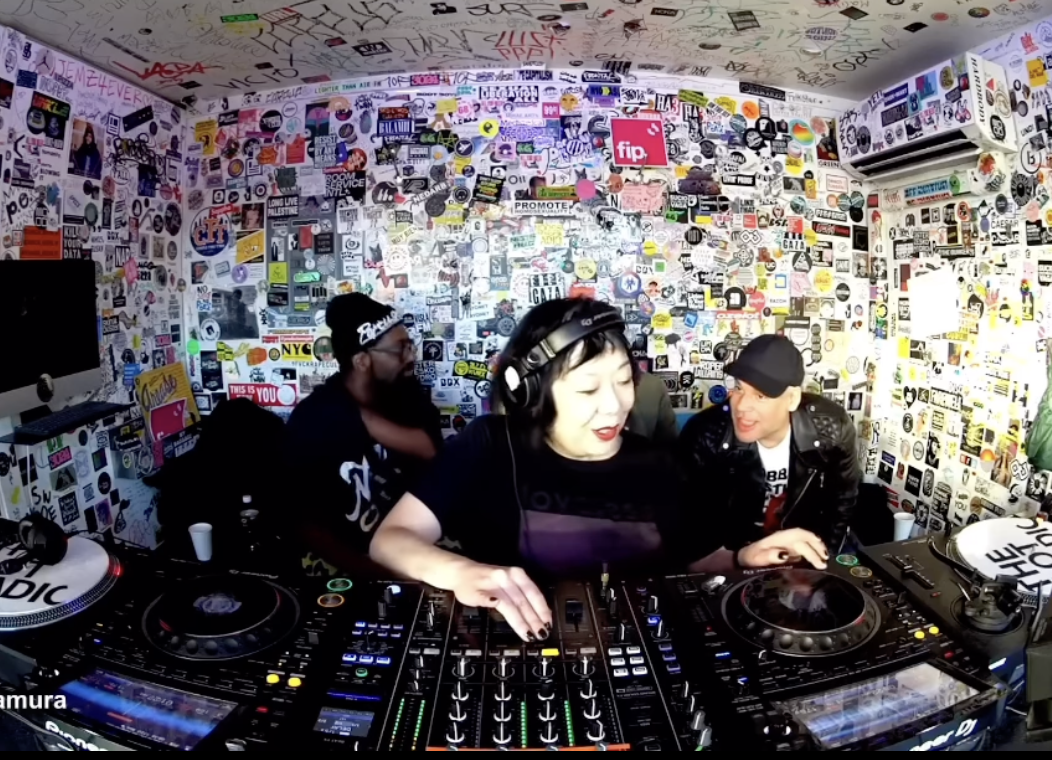Introducing 4 Tibetan Designers for the Conscientious Consumer

Fashion has and always will reflect what is going on the surrounding socio-cultural environment. But what does this mean for designers whose cultural background is currently oppressed and restricted. To create and sell garments for Tibetan designers is not merely about producing aesthetic and buyable items but to also reflect their reality. This article will introduce you to four Tibetan brands: Abode of Snow, Nerhi Studio, Norlha, and Sharlho. If you’re a consumer who considers where their clothes come from and their meaning these are designers to add to your wardrobe.
Before we get into the brands, it’s important to understand the context of the designers. What unites them is their connection to Tibet. This country, no longer viewed as a country by the Chinese Communist Party (CCP), was a land of snow where yaks walked freely, rivers flowed deeply and prayer flags flew high in the sky.
The Tibetan army waves the Tibetan flag at a military parade in Lhasa, 1938.
In 1959, during the Cultural Revolution, communist leader Mao sent troops into Tibet killing tens of thousands of Tibetans. Since then Tibetans have been exiled, estranged from their homeland. The landscape has changed. The snow mountains are melting at an unprecedented rate due to the industrial toxic outputs heightening global warming. The sacred animal, the yak, is now exploited for tourism. The rivers are dammed at such a drastic rate that it’s threatening the water security of one fifth of the global population. And the religion synonymous with Tibet, Buddhism, is being suppressed by the destruction of monasteries and lack of freedom for Tibetan’s to carry out their religious practices.
Photography [@kinbykin]
For Tibetan nomads the yak is used for its milk, hide, transportation, dung for fuel and more. In the Western world khullu (yak wool) is fast becoming recognised as one of the most sustainable textiles. Yaks are gentle grazing animals, unlike cashmere goats, this means that they graze by only removing the top of plants instead of their whole root. This allows for much faster regeneration of grasslands and maintains the sacred Tibetan plateaus. Also for every 5 cashmere goats, you only need 1 yak.
Introducing 4 Tibetan Designers for the Conscientious Consumer
Norlha
Models in Norlha shawls overlooking the Tibetan plateau. Photography [@kinbykin]
Mother and daughter Kim and Dechen Yeshi founded Norlha in 2007. Norlha is the Tibetan Plateau’s first khullu atelier. They have focused on harnessing the potentials of this incredible textile by balancing modern technology and traditional knowledge. They employ former nomads, who have spun, woven and felted for generations. The khullu is a dense undercoat that naturally sheds at the beginning of summer. This means no shearing process is required which reduces stress on the animals. The khullu is transformed into beautiful high-end pieces such as the artisanal scarves and shawls of their recent spring summer collection, inspired by the prayer flags of laptse (a pastoral Tibetan ceremony to give respect to the natural environment). The backbone of Norlha is the women that support the mother and daughter, who in turn support them. Over 60 per cent of their employees are women. Many of these women in the atelier were nomads who have been able to gain more independence with an income.
Abode of Snow
Abode of Snow ‘Chuba Down Coat’ shot in Japan.
Another brand that utilises yak wool is ‘Abode of Snow’. Begun in 2020 by Tenzin Wild, the Tibetan-Swiss creative director, alongside his wife Tao Okamoto. Tenzin created ‘Abode of Snow’ to “pass on the story of [his] Tibetan roots”. The mainly outerwear brand has direct references to Tibetan clothing such as the chuba, a cross-chested style garment that has been incorporated in their items such as the ‘Chuba Down Coat’. The idea is to be able to wear your culture with pride everyday. The clothing brand’s philosophy also has sustainability at its core. In an interview Japanese actress and model Tao mentions that “[w]e try to live a life that does not involve exploitation of animals”. This translates into ‘Abode of Snow’ as they use mainly recycled materials and khullu. Tao notes that they strive “to give something back to the people of the Himalayas, who have given [them] so much inspiration” and they do so by donating a portion of their profits to the Himalayan Cataract Project.
Nerhi Studio
From Nerhi’s 1001 Yetis collection. Photography Nyema Droma.
The founder of Nerhi Studio, Nyema Droma, also seeks to portray the Himalayan spirit through her brand. The Tibetan photographer began Nerhi as a photography studio in Lhasa, the capital of Tibet, in 2015. Since then Nerhi Studio has transformed into a multifaceted physical and digital space that produces contemporary clothing with Tibetan aesthetics as well as promoting and collaborating with Asian artists. Nyema’s designs have a modern and futuristic focus but also reference nostalgic nomad culture as a way to rekindle the passion for traditional clothes among the younger Tibetan generation. Her continuous collaborations with other creatives gives Nerhi Studio a strong sense of community. Nyema herself is an important figure in the Tibetan creative scene particularly with her organisation of Linkha, a three-day event of “exquisite paintings, creative photography, and moving musical performances”. Through her work, she tries to navigate her way through Tibet’s globalisation and modernisation.
Sharlho
Model in Sharlho shirt.
Established by Tenzin Norbu (brother-in-law of Dechen Yeshi from Norlha) in 2017, Sharlho is a brand that deserves more attention in discussions on sustainability and ethical fashion. A story similar to many Tibetans in exile, Tenzin fled his homeland, leaving all of his family at the age of five and came to the northern town of Dharamsala. The serene mountainous region is home for many Tibetans, most notably the fourteenth Dalai Lama as well as the Tibetan government in exile (the Central Tibetan Administration). After fleeing Tibet, Tenzin lost all contact with his family, but would always ask any Tibetans visiting Dharamsala if they had heard the name “Sharlho”, his family name. But after 2008, the uprisings inside Tibet caused the CCP to crack down and this made it much more difficult, near impossible, for Tibetans to leave their country. Tenzin details in an interview with him that his family name remained “stuck in [his] head”. Through Sharlho, Tenzin has found a way to keep his family with him in India.
Initially an all Tibetan studio, this has shifted over the last few years and Sharlho now has eighteen employees, all local Indians. Tenzin noticed that in Dharamsala there is often a barrier between the Tibetan and local Indian populations. But with both having similar struggles, he feels that Sharlho can act as a bridge between the two. In Dharamsala there are many women from South Indian regions such as Gujarat who come to Northern areas for construction work. They are mainly informal workers with no contracts and paid 30-40 per cent less than their male counterparts. Tenzin has been able to employ some of these women in his workshop and feels that despite the small scale of his business, this is a driving force in what he wants to achieve with Sharlho.
As consumers we have responsibilities when it comes to buying, but what we consume can often feel out of our control, directed by the powers of the algorithm. Supporting brands like Norlha, Abode of Snow, Nerhi Studio and Sharlho is a way to consume both consciously and conscientiously.
words by Tashi Samuels











